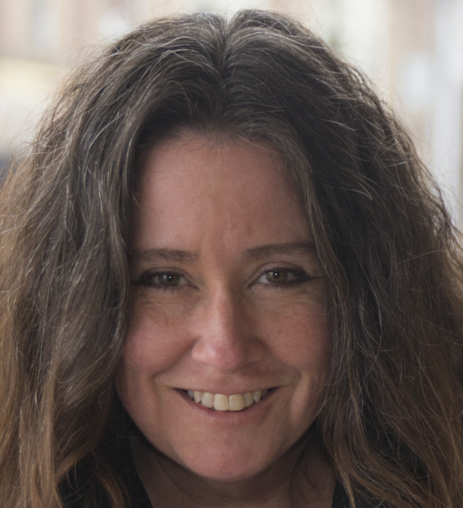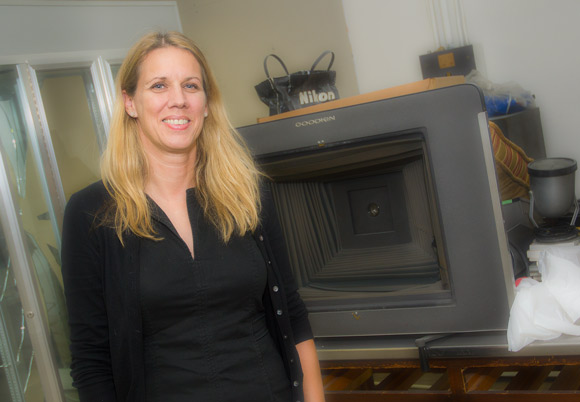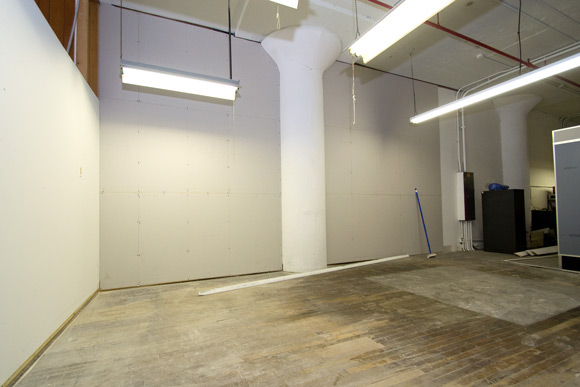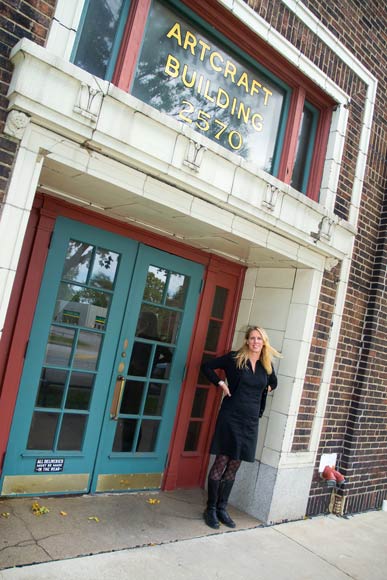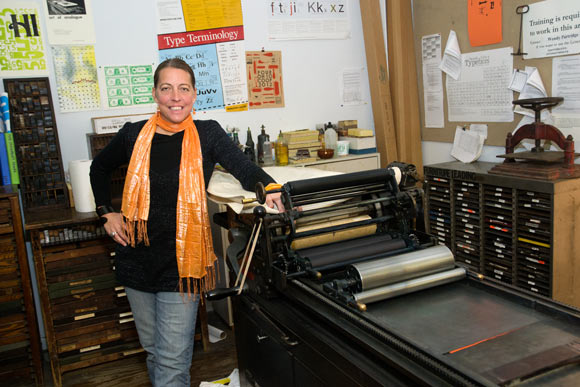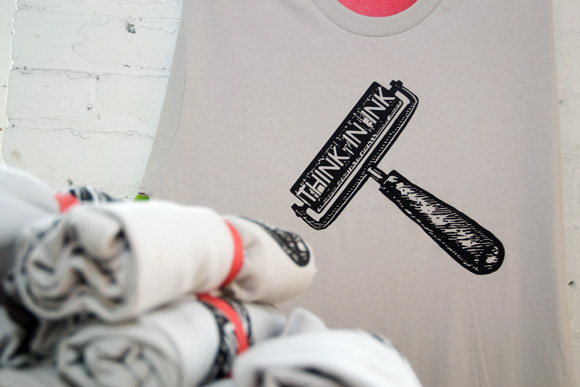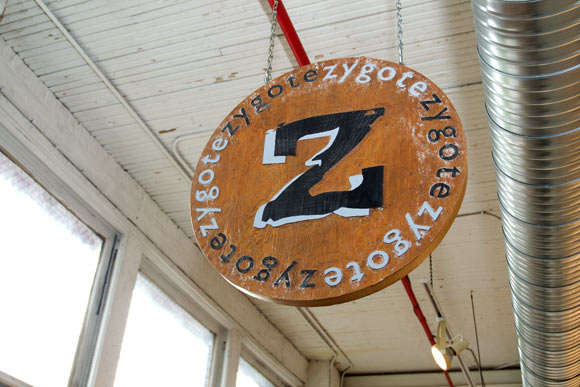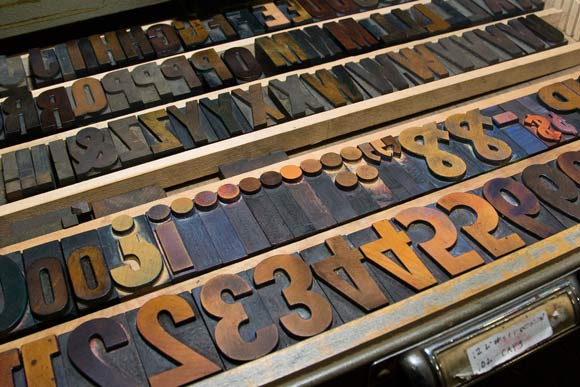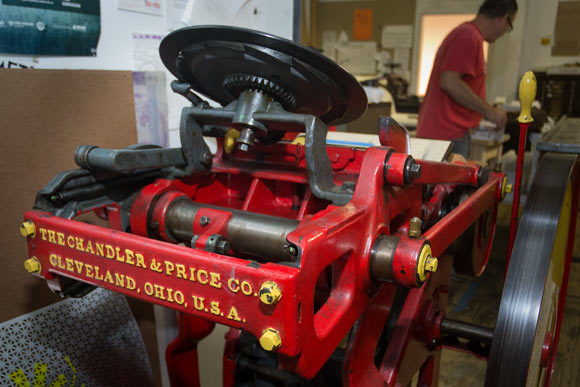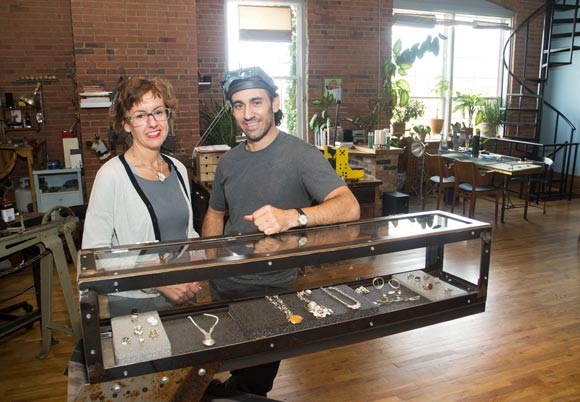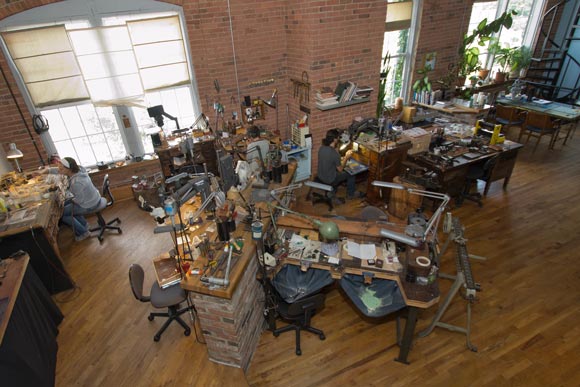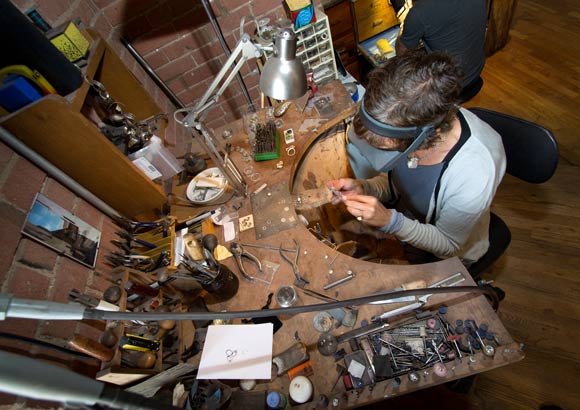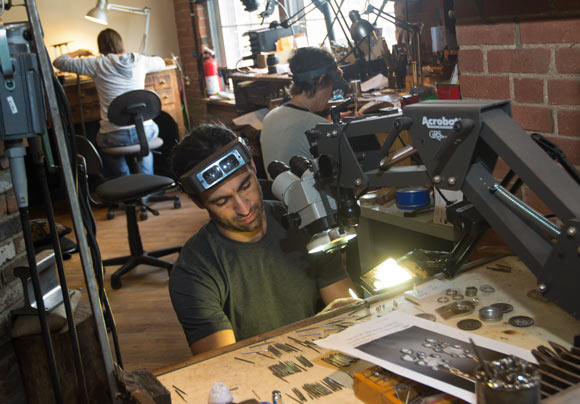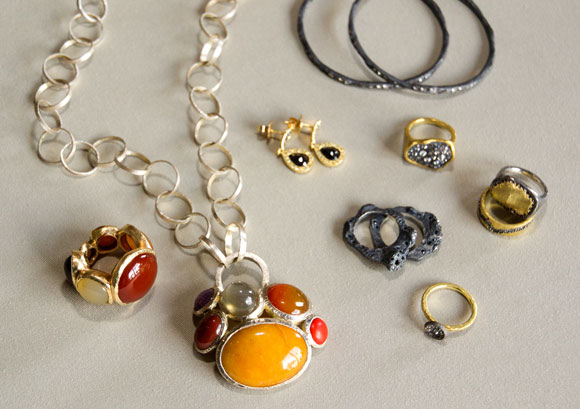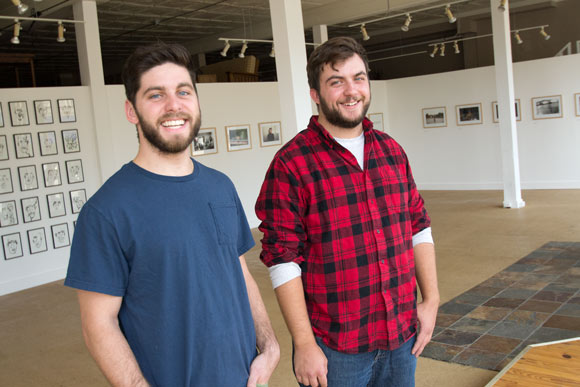the ready-made studio: now serving the burgeoning maker class
Most Clevelanders brush up against the creative ecosystem at museums, galleries and open houses hosted at arts enclaves like Lakewood Screw Factory or W. 78th Street Studios. But simmering just beneath the land of red dots and credit card swipes exists a bevy of businesses that supply the space and tools artisans need to bring their concepts to fruition.
From community darkrooms and woodworking shops to collaborative sewing and printmaking co-ops, collaborative arts studios continue to pop up to serve the burgeoning "maker class." Ironically, the latest uptick in this niche market springs from a difficult economy, a bit of nostalgia and the pure love of craft.
The appeal of a ready-made studio
Establishing an arts studio is expensive and time consuming, particularly for young talent trying to squeeze in creative time along with the demands of a day job, family and life's incidentals. Behold the obvious appeal of a ready-made studio.
"When students graduate, they want to be able to have access to larger darkrooms like they had at universities and art schools," says Shari Wilkins, whose soon-to-open Cleveland Print Room will offer workshops, workspace and a gallery. "I am completely shocked at the amount of interest that I've had."
The Print Room will focus exclusively on black-and-white, analog photography. Wilkins contends that the old-school, hands-on method imparts something that never goes out of style: the thrill of watching your print develop before your very eyes.
"It is the mystery and the excitement of seeing it right in front of you," says Wilkins. "It's craft photography."
Why here? Why now?
Liz Maugans, who has helmed the fine-art print studio Zygote Press since 1996, agrees that local interest abounds, particularly amid the younger set. Artsy 20-somethings are opting to stay in Cleveland, while others are boomeranging back after getting bitten in places like the Big Apple.
"New York is just too expensive," says Maugans. "But they still need a place to work that inspires them."
Not only is the Cleveland lifestyle a bargain for starving artists -- it's also brimming with unique spaces that can accommodate all the things associated with craft, be they hulking machines or fiery kilns. From the vintage ArtCraft Building, where Wilkins' Print Shop is coming into focus, to the Glass Bubble Project's funky glass-blowing studio in a converted Ohio City garage, spaces that once symbolized blight now embody artistic beauty.
"The Rust Belt region in general has a lot of empty storefronts and spaces for people to fill," says Stephanie Sheldon, who is in the planning stages of the "Maker's Center," an interactive community hub with facilities for woodworking, pottery, metal working, photography and culinary arts. "Since the economy isn't doing well, there are opportunities for space and other resources."
One such space was in Gordon Square, where clothing designer Valerie Mayen set up temporary shop in a vacated storefront. In addition to serving as home base for Yellowcake fashions, the space includes a beta version of Buzz and Growl, Mayen's collaborative sewing co-op. When it does find a permanent home, Buzz and Growl will offer work space, equipment and classes to young artists and entrepreneurs.
Equipment on the cheap
Outfitting studios is a huge financial hurdle. But for some disciplines, obsolescence is the golden ticket. We all remember blinking in wonder at the dazzling photos on our computer screens courtesy of our new digital cameras. The phenomenon also marked the decline of an entire industry, and darkrooms became obsolete practically overnight.
When Wilkins opens the doors of Cleveland Print Room, her equipment will be in its second incarnation, purchased for pennies on the dollar from Valley Art Center, which discontinuing its black-and-white photo classes.
"We started finding out that universities and art schools were minimizing their black-and-white darkrooms," says Wilkins. "We couldn't believe that this was a diminishing thing."
Peter Debelak and Jim McNaughton, who opened the community woodworking shop Soulcraft Woodshop earlier this year in the historic Hildebrandt Building, outfitted the space with machinery from defunct shops. Debelak scored a 1974 Powermatic one-ton, 20-inch planer -- a $20,000 machine -- for just $1,000 at auction.
"We got it out of a high school shop class that was closing outside of Pittsburgh," says Debelak. "The thing runs like the day it was put into that shop."
The same can be said for much of the printmaking equipment at Zygote press. "A lot of this equipment was saved from landfills," notes Maugans. "Now these outmoded methods are trendier than hell. It's like people wanting to go back to vinyl."
A new generation of "artrepreneurs"
The economic downturn not only turned vacant space and obsolete equipment into fresh resources, it also pushed some people down avenues they never expected to travel. Companies downsized or closed, narrowing traditional paths for many young professionals.
"The economy has forced a lot of people out from behind their desk jobs," says Sheldon, who lost her job with an architectural firm two years ago when the firm shuttered, motivating her to dive headlong into the burgeoning local craft economy. She counts herself as one of many who have decided to trade in conventional careers for projects they feel passionate about.
Others who had already been a member of the creative community before the crash of 2008 now find themselves facing a new reality: strict budgetary constraints and clients with shrinking disposable incomes. But the silver lining here is that when people do part with their cash, it's for quality goods.
"My generation has been touted as the cheap generation," says Mayen. "But we're also the generation that is learning to live simply and to live with less" This mentality boosts the market for high-quality, locally made goods. "We produce clothing and garments. This is a craft and a skill. It's a trade that's being reborn."
Building long-term success
Birth is one thing. Long life is another. For evidence of staying power, look no further than the Glass Bubble Project and Zygote Press, which have been chugging along since 1998 and 1995, respectively.
"We've basically been a resource for artists to have affordable and accessible equipment and space where they can create their own work," says Maugans of Zygote's lengthy tenure.
It hasn't always been rosy. When business began to level off at Zygote's original E. 72nd Street location, Maugans didn't throw in the towel, but opted to double down and move the operation to its current location on E. 30th Street. Thanks to help from CPAC and a renewed push to engage with the community, Zygote not only is operating at capacity, says Maugans, it is "busy, thriving and fiscally solid."
Todd Pownell and Debra Rosen represent another success story. In 2003, they established TAP Studios in the Loftworks Building on E. 40th Street. The part-time interactive metal working shop became so successful that the founders turned it into a full-time operation five years later. Specializing in metal jewelry and small metal sculpture, Rosen and Pownell still offer classes, but business is so good that they can only rent out the studio on a limited basis.
Creativity begets creativity
Art can be a lonely pursuit, which gets to the heart of the collaborative studio. Anybody participating in the co-op arrangement agrees that the energy of the participants fuels the collective heart. After all, creativity begets more creativity. Lifelong Northeast Ohioan Liz Maugans extrapolates the idea of a collaborative artistic experience to the entire region. She sees each studio and gallery and shop as a gem in its own right, but also part of something larger.
"We're all working together collaboratively -- not just looking out for our own turf," says Maugans. "We're creating this beautiful charm bracelet that's showing off all of Cleveland's beautiful assets. People want to be where those assets are. They want to see interesting and compelling art."
Photos Bob Perkoski
